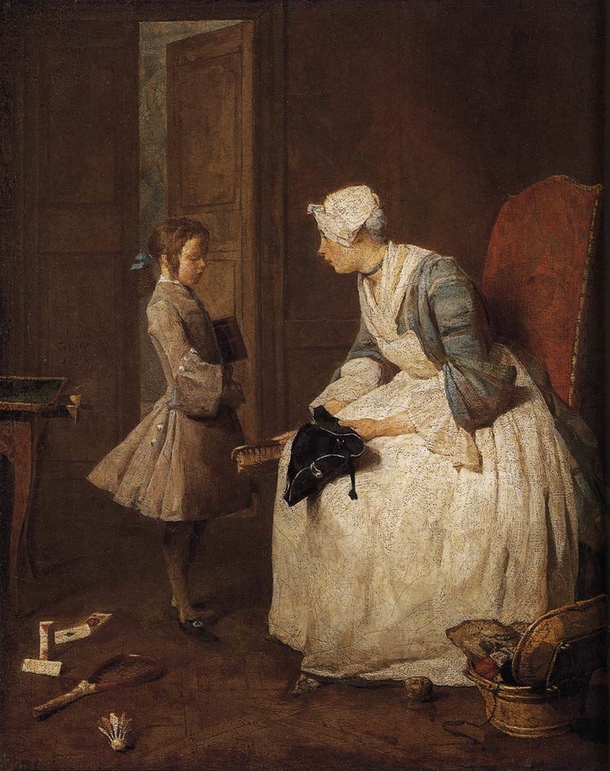
Im innen meiner Natur ist Aufschluß zu dieser Wahrheit. Alle Menschlichkeit ist in ihrem Wesen sich gleich und hat zu ihrer Befriedigung nur eine Bahn. Darum wird die Wahrheit, die rein aus dem Innersten unseres Wesens geschöpft ist, allgemeine Menschenwahrheit sein, sie wird Vereinigungswahrheit zwischen den streitenden, die bei Tausenden ob ihrer Hülle sich zanken werden.
Deep in my nature I recognize this truth: All humanity is by its nature the same and has a single course to its pacification. And for this reason the truth, which is created purely in the interior of our being, is a general truth for humanity, it is a truth that can reconcile those who bicker, especially the thousands who quarrel about superficial things.
—Johann Heinrich Pestalozzi, Die Abendstunde eines Einsiedlers (1780) in Ausgewählte Schriften, p. 31 (W. Flitner ed. 1983) (S.H. trans.)
Before John Dewey brought us the basic elements of democratic education, the Swiss philosopher of education Pestalozzi distilled many of the same rules for himself. Significantly, Pestalozzi was the first to view schooling as a fundamentally social activity, which, he was convinced, defines and sculpts the society that will emerge in future generations. The idea that “it takes a village” lies right at the heart of his work, and he approaches this thesis quite literally, demonstrating how a village shapes the education of its young and thus fixes the social understanding of the village for generations to come. He draws heavily on his compatriot Rousseau (Émile), but Pestalozzi refines Rousseau’s theories about education and gives them a more practical application.
One of the most curious elements of Pestalozzi’s work is how it swings between the cosmopolitan and the parochial, between the life of the European salon and the small Swiss village. Pestalozzi was convinced that the philosophers and intellectuals had a good bit to learn from village life, but not just the life of any village–rather it was rural Switzerland, where democratic values had taken deep root and were forming a new society that served as a model for the emerging Europe. His early collection of aphorisms, Die Abendstunde eines Einsiedlers, provides the essence of a coming philosophy of democratic education that he then elaborates quite brilliantly in novel form (Lienhard und Gertrud, followed by Wie Gertrud ihre Kinder lehrt). At its core is a philosophy of self-reliance, an abhorrence of rote learning, and an approach that focuses on unlocking the internal skills and talents of the individual student. Education, Pestalozzi teaches us in the Gertrud novels, must be understood as a process that lies at the core of the historical—we make the most effective use of the present by critically and selectively understanding the past, thereby shaping the essence of our future. (“Was ist die ganze Erziehung als das heilige Anknüpfen der Vergangenheit an das Dunkel der Zukunft durch weisen Gebrauch der Gegenwart?”) Therefore education can no longer be the possession of an aristocratic elite, as it was in the age of Rousseau (witness Chardin’s painting of the governess and her pupil); it must rather be universal, a social experience which builds and defines society.
Listen to Wolfgang Amadeus Mozart’s Piano Concerto No. 9 in E Flat Major, KV 271 (“Jeunehomme”)(1777), in a performance by Wilhelm Kempff, accompanied by the Stuttgarter Kammerorchester and l’Orchestre de la Suisse Romande conducted by Karl Munchinger in a recording from 1953. This is a brilliant, well-felt performance of what may be the most significant of Mozart’s early works. Note how this concerto contains a dialogue not only between the piano and the orchestra but also between strict classicism, which dominates the opening and closing movements, and a ponderous, somber romantic andantino movement in a minor key in the middle—a movement that presages some of Mozart’s later powerful compositions for piano and orchestra, as well as operas like Don Giovanni. This is followed by an exuberant rondo that seems to go on forever and end the work on a point of optimistic drive into the future. The name “Jeunehomme” is now understood to be a mistranscription—the work was dedicated by Mozart to the French pianist Louise-Victoire Jenamy.



